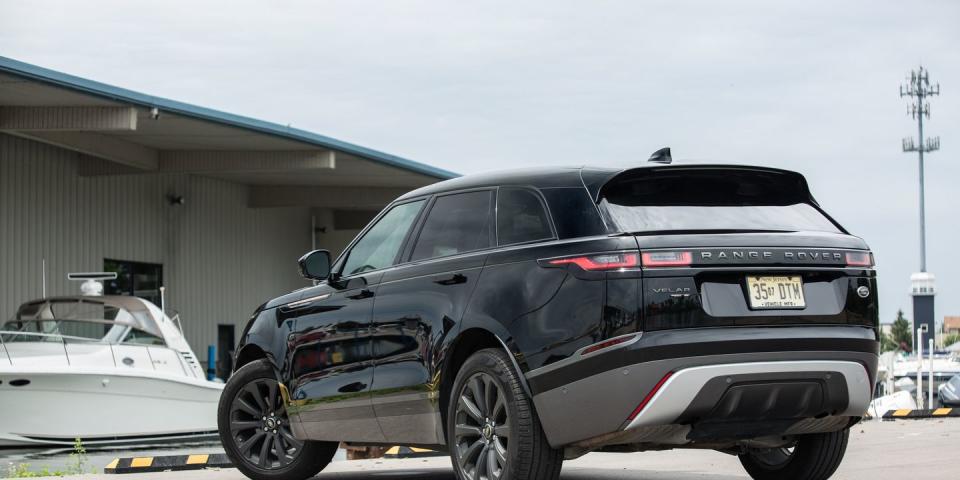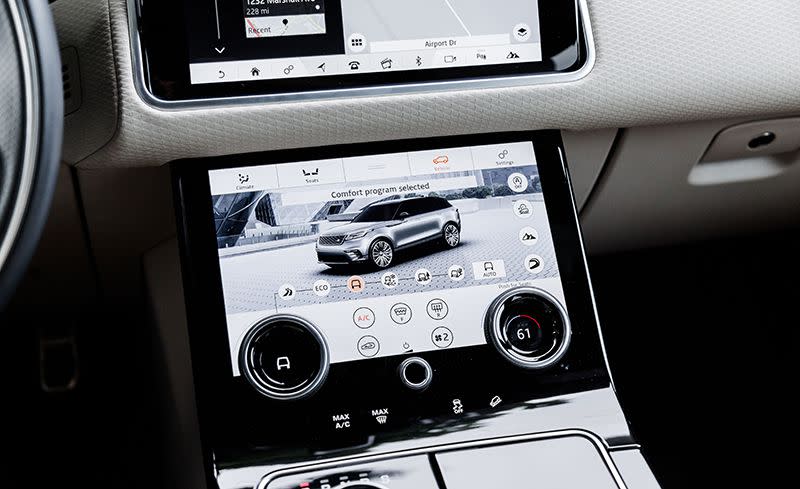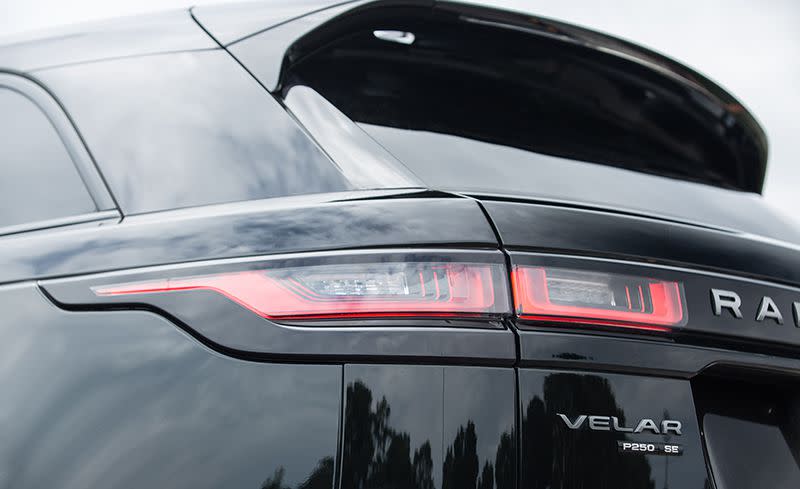Our Range Rover Velar Is One Dapper Chap after More Than 15,000 Miles

WHAT WE LIKE: With its chiseled visage, chopped-top proportions, and concept-car interior presentation, our long-term Land Rover Range Rover Velar has an undeniably dashing aesthetic presence-one that some drivers have opined justifies the $67,000 price of entry by itself. Confident if uninspired handling and a healthy amount of cargo space behind the rear seats (34 cubic feet) has made it a popular choice for road-trippers, and the crisp infotainment graphics and luxury trappings of our R-Dynamic SE model have helped maintain a sophisticated vibe. It may be one of the junior models in Range Rover's hierarchy, but the Velar is never short on class.
WHAT WE DON'T LIKE: When that classiness is interrupted by the smell of gasoline from under the hood (more on that in a minute), intermittent and annoying glitches from the dual-touchscreen infotainment system, and front seats in which many drivers continue to struggle to get comfortable. While we haven't experienced any major electronic seizures since our last update, our affection for Jaguar Land Rover's InControl Touch Pro Duo interface remains hit or miss given its lethargic boot-up process, complex layout, and occasionally unresponsive controls. That all of the electronics-based issues have been short-lived-disappearing after cycling the engine or letting the vehicle sit overnight-has been both a relief and a frustration. And although some drivers have come away from long hours in the saddle with minimal gripes, our general regret for not upgrading our Velar's fixed-lumbar 10-way power-adjustable front seats to the available 20-way units with lumbar control-a $3050 upcharge-is firmly entrenched.
Other, lesser niggles that have worked into the Velar's logbook include a rather unrefined engine stop/start system that defaults to the "on" position with every startup and the tendency for the eight-speed automatic transmission to lug the turbocharged 2.0-liter inline-four at low revs in a high gear, which produces a grumbling resonance inside the cabin. While power from the Ingenium four-cylinder is fully adequate on the move, the gearbox's recalcitrance to downshift combined with the slight pause it takes for the engine to build boost pressure can make the Velar's throttle response feel sluggish.
WHAT WENT WRONG: Aside from the occasional electronic gremlins, our long-termer's only major problem thus far stemmed from the 2.0-liter engine's fuel-injection rail, the end caps of which began leaking fuel into the engine bay around 12,000 miles. This is a known issue with some four-cylinder Velars that prompted JLR to issue a recall notice in February 2018, and a quick trip to the dealer resulted in the fuel rail and all four fuel injectors being replaced under warranty. To date, our only expense has been $178 for a scheduled oil and filter change and inspection at just shy of 16,000 miles.
WHERE WE WENT: Despite its capaciousness and versatility, our Rover has largely lived a suburban-chic life so far, mostly staying close to home as a commuter around southeastern Michigan. The fuel-system recall canceled a potential trek into Canada for the Velar, although it did accompany us to Virginia International Raceway for our annual Lightning Lap event as well as make brief jaunts to Pittsburgh and Chicago since our last update. Stretching its legs on those trips helped boost our overall average fuel economy to 22 mpg, just 1 mpg less than the EPA's combined estimate.
Months in Fleet: 7 months Current Mileage: 15,926 miles
Average Fuel Economy: 22 mpg
Fuel Tank Size: 16.6 gal Observed Fuel Range: 360 miles
Service: $178 Normal Wear: $0 Repair: $0
('You Might Also Like',)

 Yahoo Autos
Yahoo Autos 

